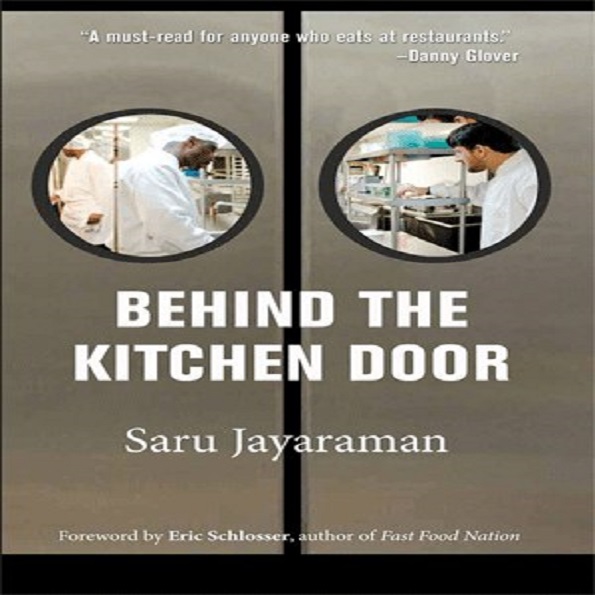The other side of restaurant food.
“In some cases we’re just complicating our meals and then paying a lot of money to make them simple again.”- Saru Jayaraman
Where does sustainability come in when you are eating out? Mostly in choosing the right of kind of restaurant or obtaining some information about the food you eat- correct? As I read more about the food system and sustainability in general, I am coming to realise that there are multiple layers to the concept of sustainability. Saru Jayaraman’s book “Behind The Kitchen Door” reveals one more.
The author is the co-founder of ROC-United (Restaurant Opportunities Centers United). She is also the Director, Food Labor Research Center, University of California, Berkely. ROC United works to improve restaurant working conditions. In “Behind The Kitchen Door” we hear stories of many restaurant workers, and through their journey, we are made aware of the discriminatory working practices and the low wages they have to thrive on.
“To most foodies, sustainable food means food grown locally without the use of harmful pesticides, livestock raised more humanely without hormones, and other farming practices that support the health and diversity of our food system. However, sustainable food has to mean more than that, because food isn’t really healthy if it’s served in restaurants where abuse, exploitation and discriminatory labor practices are commonplace.” -writes Jayaraman.
The food choices that we make in the comforts of our home are still a privilege, and may or may not benefit people on the producer end of the spectrum. (If you doubt this fact read this). This book, makes you realise that the same conundrum applies to food we eat outside our kitchens. “There is a worker’s story for every plate on our table.“- and this fact makes “Behind The Kitchen Door” pertinent to all of us, irrespective of where we are, or where we choose to eat.
Behind The Kitchen Door also shows examples of people who have adopted the sense of sustainability outlined above. All these examples together make one fact very clear. Better food systems that work for everyone is possible, and the role of a consumer in bringing about this change is becoming more and more important.
For more information on the author visit Labor Center- UC Berkely.
Similar stories which may interest you.

